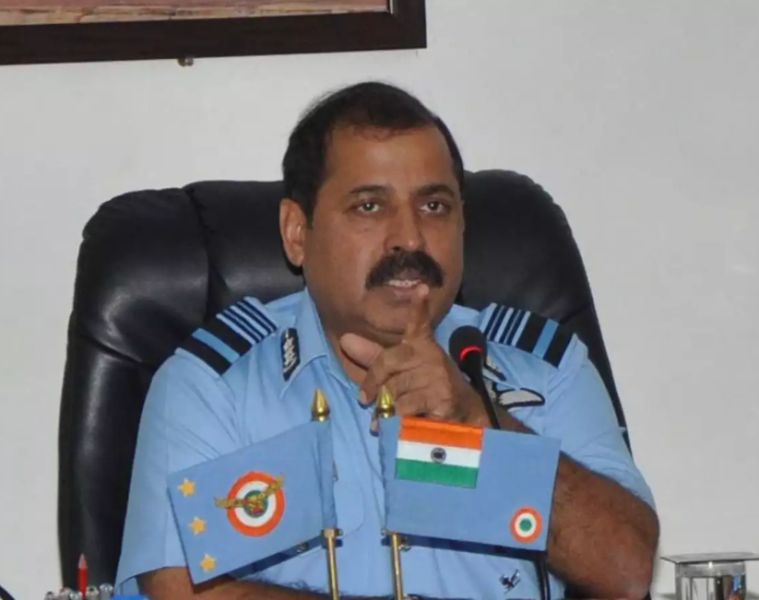
New Delhi: Without making direct reference to theaterisation which is on the cards, the Chief of Air Staff, Air Chief Marshal R K Bhadauria said dominance and control of the airspace will remain crucial to deal with future security challenges and any decision on boosting India’s military capabilities must be driven by its requirement and not on the basis of what has been done across the world.
“It is time that we have to look at the future. We should not look at what has been done across the world in the past or is being done. We know our areas and we know which direction we are going through. We need to decide what we want to do,” he said. He was confident of finding a “right solution” on ensuring synergy among the three services, noting that time has come to look at the future.
“We must recognise that in the decades to come, the vertical remains the most important domain,” he said. “Unless you can sustain your domain and dominate the air, you cannot have a successful campaign and that being the ground reality and that being the fundamental requirement of any successful campaign,” the IAF Chief said, without specifically referring to the theaterisation plan.
“Our structures, organisational changes, our integration plans that are in place, we need to look at all options which will give us the best synergy in terms of putting all these together,” he said.
“It is important that in our areas, how we organise ourselves and how we plan to integrate. This remains very clearly at the back of our mind and we come to structures that can not only synergise but we are able to shorten the decision routes and maintain the structures where you can most flexibly employ forces from each service and each kind of combat equipment,” the Air Chief said.
As per the plan, each of the theatre commands will have units of the Army, the Navy and the Air Force and all of them will work as a single entity looking after security challenges in a specified geographical territory under an operational commander.
At present, the Army, Navy and the Air Force have separate commands. Initially, a plan has been firmed up for the creation of Air Defence Command and Maritime Theatre Command. At a seminar last month, Chief of Defence Staff General Bipin Rawat, while referring to the proposed integrated theatre commands, described the Air Force as a “support arm” but Air Chief Marshal Bhadauria disagreed with him, saying airpower has a huge role to play.
The theatre commands are being set up under a larger mandate of ensuring synergy among the three service chiefs to deal with future security challenges.
In an address at a leading think-tank, the IAF Chief said India now has an “edge” in its ability on both the Western and Northern fronts to “react fast, respond fast and hit fast”, noting that induction of Rafale jets has helped in bringing the “next level” of operational transformation.
About the drone strike on the Jammu airbase, he said the IAF is taking a series of initiatives including procuring next-generation jammers to deal with such challenges and added that the attack would not have been possible if it was attempted two-three months later. Referring to the 11-day conflict between Israel and Hamas in May, Air Chief Marshal Bhadauria said that Israel’s use of air power in carrying out operations with surgical precision to achieve its objectives in Gaza against the militant group while ensuring minimum collateral damage was a reflection of the ability of the air assets.
Explaining the role of air power, the IAF Chief also talked about the general perception to look at only its offensive role and the general tendency to say “no-no” for its use in certain situations, saying the paradigms and scenarios have shifted and there is a need to keep this in mind.
“The ability of air power which was largely seen as an offensive, as a no-no in some situations particularly in the subcontinent…the paradigms have shifted, the scenarios have shifted and we need to keep this in mind as we go ahead,” he said at the United Service Institution of India (USI).
About the IAF’s operational readiness, he said the focus was to bring in the next level of operational transformation including in the cyber-security domain after the Galwan Valley clashes and his force has been largely successful in its endeavour.
Air Chief Marshal Bhadauria said the “edge” that the IAF has today came from a combination of its weapons, training status, platforms network environment and its ability to “react fast, respond fast and hit fast. “That is the edge we have today in both scenarios, be it on the western front or be it on the northern front,” he said.
He said the “transformation” was triggered by the developments like Balakot strikes and situation in eastern Ladakh and it now has taken the IAF to the “next level. The IAF Chief said the induction of the Rafale aircraft has helped in lifting the overall offensive capability of the Air Force. “It is a level or a level-and-a-half above where we were.”









